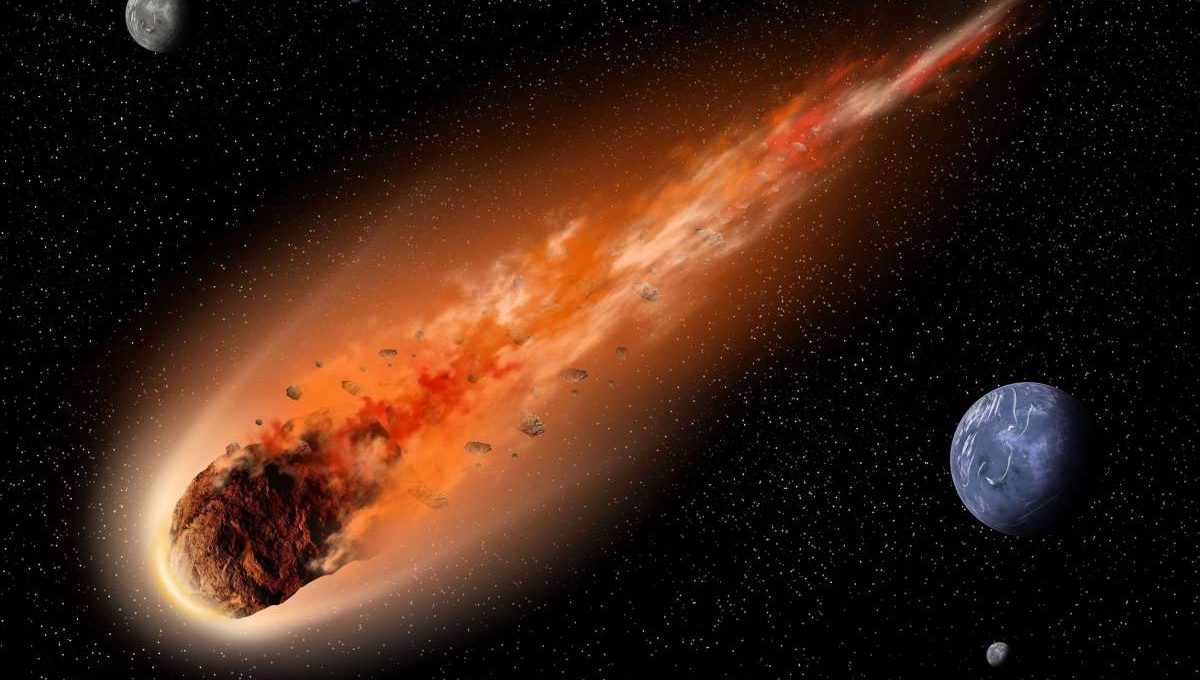Many of us like to dream about traveling into space. And many of us, at some point in our lives, imagine becoming an astronaut – and perhaps even the first humans to set foot on Mars. Who wouldn’t want to touch the stars?
However, there are some things that could make you reconsider your dreams, or even give them up altogether. Space travel is associated with many unpleasant things that few people think about: from the inability to use familiar products to unpredictable consequences for the body. Here are ten not very pleasant problems associated with space travel.
1. NASA doesn't know what to do with astronauts who died in space

NASA has no specific plans for what to do with the bodies of people who die in space. In fact, NASA hasn't really thought about it yet, so no one trains astronauts on what to do if their colleagues die. But what if that happens? It's much more likely now than it used to be, because NASA is planning very long-term trips (like going to Mars).
One option is to dump the body into outer space. However, this option is not very good, as it means littering the near-Earth orbit, which is prohibited by the United Nations, as it could pose a danger to other spacecraft. Another option is to store the body inside the spacecraft until it returns to Earth. However, this option is also bad, as it could endanger the health of other astronauts. The last option - if humanity ever gets around to colonizing Mars - is to process the bodies into fertilizer. However, there are doubts about whether this is a good idea.
NASA is currently working with Promessa on a project called Body Back. The plan is to seal a corpse in a hermetically sealed bag and attach it to the outer wall of a spacecraft, where it will be exposed to the extremely cold temperatures of space. The frozen body will gradually break up into tiny particles as a result of the vibrations that occur when the spacecraft moves. By the time it returns to Earth, it will have turned into fine dust.
2. Astronauts drink recycled urine

Fresh water supplies in space are extremely limited. American astronauts on the International Space Station (ISS) get most of their water from the Water Recovery System, which has been supplied by NASA since 2009. As the name suggests, this system allows the water that astronauts lose through urine and sweat to be recovered and used to make tea and coffee.
American astronauts recycle not only their own urine, but also the urine of Russian cosmonauts who refused to use such a system. According to Lane Carter, who is responsible for providing water to astronauts on the ISS at NASA, the recycled water tastes just like bottled water.
3. Astronauts lose some of their muscle and bone mass.

In low gravity, space travelers' bodies begin to suffer from premature aging. Their skin ages faster, becomes drier, thinner, and itchy. Their bones and muscles become weaker. During space travel, astronauts lose one percent of their muscle mass and up to two percent of their bone mass each month. A four-month stay on the International Space Station will result in a loss of about 11 percent of the total mass of the pelvic bones.
Even arteries and veins suffer. They lose the elasticity typical of people in their 20s and 30s. This makes astronauts susceptible to heart disease and strokes. Canadian astronaut Robert Thirsk began to suffer from weakness, brittle bones, and loss of balance after six months in space. He said that by the time he returned to Earth, he felt like an old man. Premature aging is now recognized as one of the major side effects of space travel. The problem remains relevant, although astronauts can reduce its effects by exercising for two hours every day.
4. Space travel can lead to infertility

There are suggestions that long-term space travel could render astronauts sterile. In one experiment, male rats were suspended in a simulated zero-gravity environment for six weeks. This resulted in decreased testicular activity and a significant reduction in sperm production, rendering them virtually sterile. Female rats sent into space suffered a similar or worse fate. Their ovaries stopped working after 15 days. By the time they returned to Earth, the genes responsible for producing estrogen (the female hormone) had stopped working, preventing them from producing eggs at all.
Space travel also significantly reduces libido. In one experiment with mice, two males and five females sent into space refused to mate. However, some researchers insist that space travel has nothing to do with libido or infertility. The eggs of fish and frogs that have been in space have been fertilized, although the froglets never progressed beyond the tadpole stage. In addition, male astronauts have had sex with their wives quite happily after returning to Earth.
The same goes for female astronauts. They have had success getting pregnant soon after returning from space, although they have had a higher rate of miscarriages. The effects of space travel on reproduction remain controversial, and the intimacy of the subject means the details are kept under wraps. NASA has refused to conduct sperm studies on its male astronauts for privacy reasons.
5. Most astronauts suffer from space sickness.

Despite all the advances in space technology, one of NASA's biggest headaches remains space sickness. More than half of all astronauts sent into space experience nausea, headaches, vomiting, and general discomfort, which are symptoms of space sickness, also called space adaptation syndrome. One notable example is former Senator Jake Garn, who began experiencing the syndrome before he even left Earth. By the time he returned, Garn could not walk properly.
Garn's suffering from space sickness was so severe that his name has become an unofficial unit of measurement for the disease. Astronauts may rate their symptoms with phrases such as "one garn," "two garn," "three garn," etc. Although NASA has yet to find a solution to the problem of space sickness, it has created a device to warn astronauts of its onset.
6. All astronauts wear diapers.

NASA made a mistake when it designed the first space suit. Apparently, scientists forgot that astronauts might have to urinate in their suits. This oversight forced astronaut Alan Shepard, the first American in space, to urinate in his space suit. There was much discussion about this because NASA officials were concerned that urine might short out electrical connections in the suit.
To prevent this from happening in the future, NASA came up with a condom-like device that astronauts would put on before suiting up. Understandably, this device proved problematic when women began going into space in the 1970s. NASA eventually came up with a system for collecting urine and feces called the Disposable Absorption Containment Trunk (DACT). The DACT was used by both sexes, although it was designed specifically for women.
In 1988, NASA replaced the DACT with the Maximum Absorbency Garment (MAG), which is basically a diaper for adults. The only difference is that it's made in the form of shorts. Each astronaut is given three MAGs for each mission - one for use in space, one for reentry, and one for backup.
7. There is no emergency medical care in space.

NASA does not have modern medical equipment on its spacecraft or even on the ISS. It only has medicines and equipment needed for first aid. This means that if astronauts become seriously ill, they cannot receive the necessary medical care. So what happens when an astronaut becomes seriously ill or even requires surgery?
In such cases, NASA requires that the astronaut be sent back to Earth. NASA has an agreement with the Russian space agency Roscosmos for emergency launches of Soyuz rockets to evacuate sick astronauts from the ISS. In addition to the sick astronaut, two other astronauts must be on the rocket to accompany him, since the flight requires a crew of three. The cost of such a launch is hundreds of millions of dollars, and the seriously ill astronaut may not even survive the trip.
If NASA has to go through such a big job evacuating one sick astronaut from the “close” ISS, what would happen if it had to get someone sick from Mars? NASA, through one of its subsidiaries, the National Space Biomedical Research Institute (NSBRI), is funding several institutions to create unique medical equipment that could help treat complex conditions like heart attacks and appendicitis in space.
8. In space, drugs lose their effectiveness faster
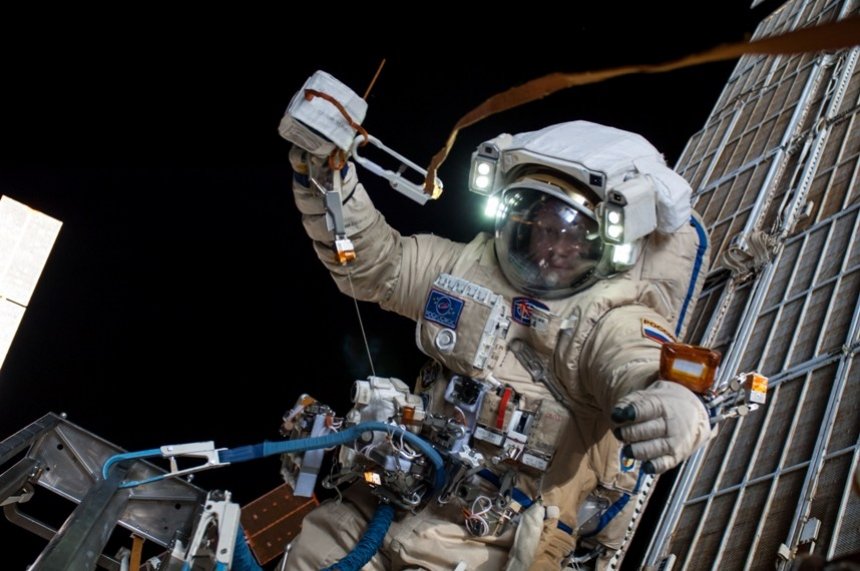
We just talked about how only basic medical care is available in space. But even that care will be limited because most of the available medications don’t work as well as they would on Earth. In one study, scientists assembled eight first-aid kits with 35 different medications, including sleeping pills and antibiotics. Four kits were sent to the International Space Station, and four more were stored in a special chamber at the Johnson Space Center in Houston.
After 28 months, the drugs sent to the ISS were less effective than those stored at the space center. In addition, six of the drugs had changed consistency or color, while only two drugs at the space center had changed. Researchers believe that the loss of effectiveness is due to the excessive vibration and radiation that drugs are exposed to in space. NASA is currently mitigating the problem by replacing drugs on the ISS every six months. Future plans include improving the packaging and ingredients used to make drugs intended for use in space.
9. Another problem is carbon dioxide

The ISS has elevated concentrations of carbon dioxide. On Earth, CO2 concentrations are about 0.04 %, but on the ISS, it can be up to 20 times higher. This causes adverse side effects such as headaches, irritability, and sleep problems, which have become common among astronauts. Almost all astronauts complain of headaches early in their missions.
Unlike on Earth, where exhaled carbon dioxide dissipates into the air, the CO2 exhaled by astronauts forms a cloud above their heads. The ISS has special fans that disperse these clouds above the astronauts' heads. NASA is currently working to reduce the overall CO2 concentration by at least half. However, this will still be significantly higher than the recommended concentration. Perhaps NASA will be able to solve this problem by using a more efficient ventilation system. Hopefully, NASA will find a solution to this problem before we go to Mars.
10. Interesting fact about Jupiter
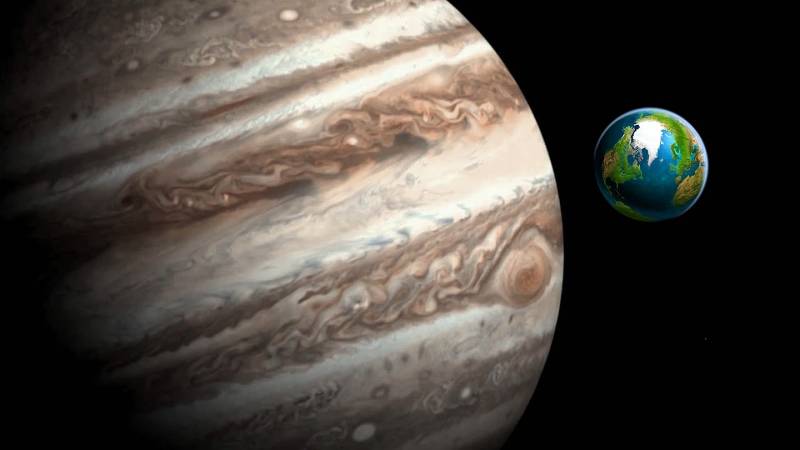
Even the school curriculum includes information about space exploration in the USSR, about cosmonauts and flights. Even at preschool age, children know about the existence of such a planet as Jupiter, because it is the largest in the Solar System. I would like to expand the knowledge of interesting facts for children about space by understanding how huge this celestial body is. It turns out that all existing objects of our Solar System can be placed inside Jupiter. At the same time, Galileo Galilei discovered the largest satellites of Jupiter back in 1610. In total, there are 69 of them.
11. Lead Snow on Venus

When discussing the most amazing facts about space, it is necessary to talk about the so-called Venusian snow. Could you imagine that it could rain lead? And it is quite possible. Scientists first discovered this phenomenon in the 90s. It turned out that there is some kind of coating on the surface of the mountains of Venus that very effectively reflects a radio signal. At first, experts assumed that the materials were deposited as part of erosion. After a series of experiments on the territory of our planet, it turned out that, from time to time, metallic snow falls on Venus.
12. How did comets appear?

One of the most interesting questions about space is the history of the origin of our planet. It is difficult to say how much longer this secret will be relevant, and from a philosophical point of view, it is probably better that it remains undisclosed. However, we already know several interesting facts about space, one of which is the following. It turns out that asteroids are the derivative product that remained during the creation of the Solar System. Even 4.5 billion years ago, they consisted exclusively of gas, sand and ice. At the same time, the largest mountain known to this day is located on an asteroid called Vesta.
13. Trans-Neptunian object Sedna
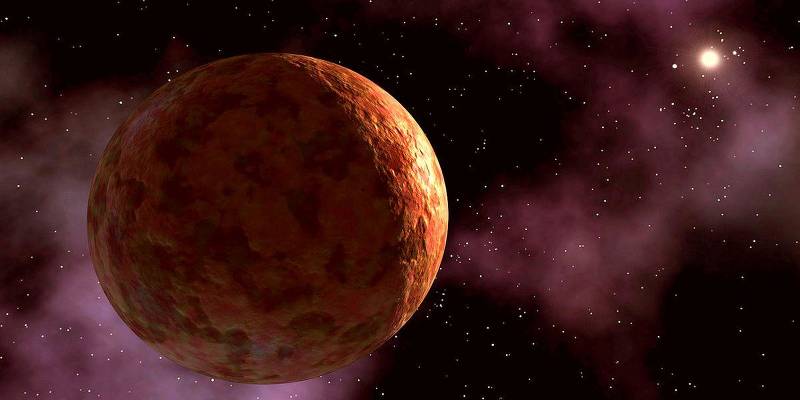
Not many people know about a rather interesting fact about space, connected with the existence of a trans-Neptunian object – Sedna. It is generally accepted that there are 8 planets in the Solar System. However, there is also a category of dwarf celestial bodies, which includes:
- Pluto;
- Hanumea;
- Ceres;
- Eridu;
- Makemake.
Since the other planets are beyond Pluto, they are not tied to the number of official and "dwarf planets" of our system. However, there is also a neighbor Sedna, which was discovered in 2003. It is believed that it is about 11 million years old. It is quite possible that in the near future Sedna will become a full member of the "association of planets of the Solar System."
14. There is water not only on Earth

One of the most curious facts about space is the Moon. Its very existence encourages researchers to develop science without sleeping at night. And now it has become clear that there is water on the Moon. If until recently it was believed that there is only water in shadowed craters that we cannot see, now scientists know about the existence of ice under the surface of the soil. The fact is that the gravitational field of our planet seriously slows down the rotation of the Moon, so we see only one side of it. The other side is mountainous, has ice and a lot of unexplored zones.
15. Cold Uranus
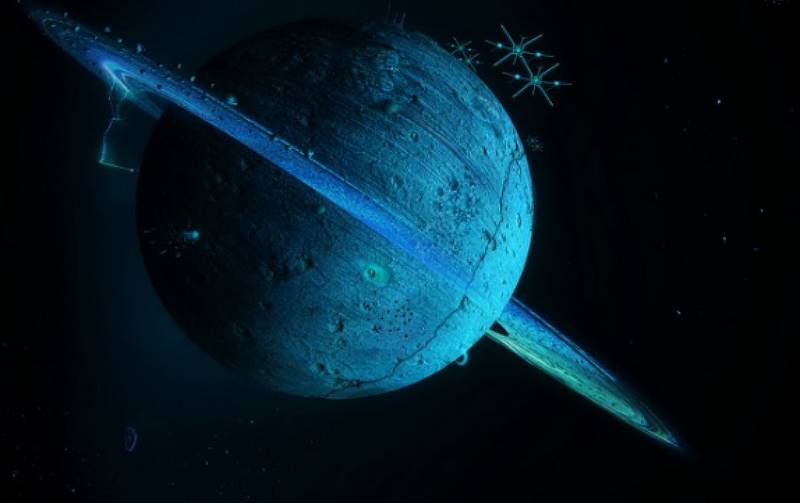
When talking about the most interesting and amazing places in space, we cannot help but pay attention to Uranus. Even in the northern part of our planet, the conditions for human life leave much to be desired. Many areas of the Earth remain uninhabited. And this is despite the fact that in the coldest places of our planet the temperature reaches about 50 degrees below zero. Attention to the question: how quickly will a person turn into an icicle, finding himself on Uranus? The temperature on Uranus is -224 °C. And we have reason to believe that this is far from the maximum minus.
16. Prospects for studying Pluto

Relatively recently, experts received new images of Pluto. Based on the information received, experts have reason to believe that Pluto is a double planet. The fact is that the satellite Charon rotates together with the celestial body not on the same axis. But this is not the most important thing. The problem is that a more in-depth analysis can be obtained based on a visit to the planet. Not at all, we already know an interesting fact about Pluto - in order to get to this planet, you need to spend about 800 years. Naturally, people are not yet able to pilot for so long. Apparently, only a teleport is needed for study.
17. Space is silent

Interest in space exploration is rapidly growing not only among developed countries. People have long been familiar with current problems, and see the need to explore new spaces. Perhaps the problems associated with the slow exploration of space are related to the understanding that people must first sort out the problems on Earth, than start searching for new forms of life. Perhaps, with the fact that people know very little about other spaces. Nevertheless, progress is noticeable. And even the recent fact that space is silent is proof of this. The fact is that sound waves need an environment, and there is no atmosphere in space. However, there are already about 500,000 pieces of space debris that appeared as a result of human travel!
18. NASA is already exploring Neptune

Speaking about the most interesting facts about space exploration, it is worth mentioning the achievements of NASA specialists. Recently it became known that NASA scientists are planning to send a super-heavy rocket called the Space Launch System to Neptune. In addition, a new flight to Mars will take place in the near future. Let us recall that the Curiosity rover spent six years on the territory of the "Red Planet". During this time, it was possible to advance in the field of studying rocks and soil. It is difficult to imagine how much time it will take to study Neptune.
19. The universe has a smell
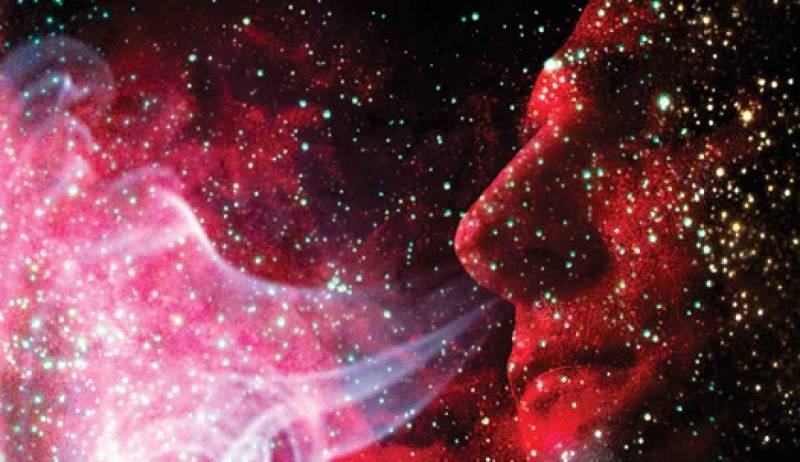
We have already found out that there are no sound waves in space, that there is water on Mars and the Moon. In addition, we have learned that human exploration leads to space pollution. In addition, we have learned about NASA's plans to visit Neptune. What else can surprise you? Perhaps you will be pleased with the fact about space that in some parts of the Universe there is a smell. We are talking about an ethereal aroma. Due to hydrogen cyanide, the aroma of almonds is observed in space. Surprising, isn't it? Of course, the fact that there are more stars in the Universe than grains of sand on the beaches of the Earth is more interesting, but still... Humanity already knows what space smells like!
20. Boomerang

Who wouldn't want to conduct their own little experiment in space? Takao Doi, a Japanese astronaut and PhD in aerospace engineering, threw a boomerang at the ISS, and it kept coming back to him, time after time. That's because a boomerang doesn't rely on gravity, it only needs air. But what if you throw a boomerang in outer space, where there's no air? It'll just float through space.
21. "Karman Line"

Do you know that space begins exactly from this line - 100 km from the Earth - the "Karman line". It's just that the air there is already so rarefied that no plane can fly higher.
22. Minus 2 days

If the Earth revolved around the Sun in the opposite direction, the year would be two days shorter. Strange, isn't it? But scientists have already calculated everything. It turns out that our satellite, the Moon, moves away from us by about 4 cm every year. This depends on the planet's rotation period decreasing by 2 milliseconds per day.
23. "Signal Wow"

This was the name given to a signal from the depths of space in 1977. Its duration was 72 seconds. It was established that the source of the signal was near the star Tau Sagittarii in the constellation Sagittarius. I would like to hope that intelligent beings have been silent since then because they are expecting "alaverdi" from us.
24. Tears in Orbit

An interesting fact that you would encounter if you "shed" a tear on an orbital station: it would hang on your cheek or in the air in the form of a ball - it simply has nowhere to fall in zero gravity. And in general - drops of liquid are dangerous for devices, that's why astronauts always smile!
25. Incredible density of asteroids

In fact, the incredible clustering of asteroids is just a cinematic device to increase the intensity of what is happening on the screen. After all, in reality, there is a lot of space between them, through which you can easily and safely fly without colliding with anything significant.
26. Obsolete Sunbeams

It has long been known, thanks to the tireless efforts of scientists, that the sun's rays reach our planet in eight minutes, covering a distance of approximately one hundred million miles. But in fact, the rays that warm us on cold days and burn us on hot days are more than 30 thousand years old. This is because they originate as streams of energy deep within the sun, and because of internal gravity, they take so long to reach its surface.
27. Comet

In 1843, a comet called the Great Comet flew past the Earth dangerously close to the planet. Its tail stretched behind it for almost 800 million kilometers, so for about a month after the comet flew by, the inhabitants of the Earth saw its streak in the night sky.
28. No matter where we rush, we will return back

Even if people had spaceships that could reach incredible speeds and cover light years in moments, they still would not be able to reach the edge of the Universe. This is due to the curvature of space - any object or subject flying along a perfectly smooth trajectory will sooner or later return to its starting point. Scientists have managed to establish this, but they still cannot explain why this happens.
29. The tenth planet of the solar system

In 2003, American scientists discovered another planet beyond Pluto – the tenth – orbiting the Sun. They called it Eris. This became possible thanks to the development of modern technology; several decades ago, scientists did not know about such interesting facts about space and planets. Later, it was also possible to determine that there are other natural space objects beyond Pluto, which, according to experts, together with Pluto and Eris, were called trans-Plutonian. The interest of scientists in newly discovered planets is determined not only by the desire to explore outer space in close proximity (by space standards) to planet Earth. It is very important to determine whether the new planet can accept people if necessary. It is also important to assess what dangers the new object poses for the continuation of life on Earth. Some space researchers believe that interesting facts about space in general and the study of the features of the tenth planet in particular can help in solving the mysteries associated with unidentified flying objects, the presence of grandiose structures on the earth's surface, as well as giant crop circles that have not found a real explanation.
30. Mysterious companion Moon

Does the Moon, which is so familiar to all earthlings, really hold so many secrets? Indeed, the most interesting facts about space indicate that the satellite of planet Earth holds many mysteries. Let us list just a few questions, the answers to which do not yet exist. Why is the Moon so large? There are no other natural satellites in the Solar System comparable in size to the Moon - it is only 4 times smaller than our home planet! How can one explain the fact that the diameter of the Moon's disk during a total eclipse perfectly covers the solar disk? Why does the Moon rotate in an almost ideal circular orbit? This is very difficult to explain, especially if you keep in mind that the orbits of all other natural satellites known to science are ellipses.
31. Where is the Earth's twin located?

Scientists claim that the Earth has a twin. It turns out that Titan, a satellite of Saturn, is very similar to our home planet. Titan has seas, volcanoes, and a dense air shell! The nitrogen in Titan's atmosphere is exactly the same percentage as on Earth - 75%! This is an amazing similarity, which certainly requires a scientific explanation. Unfortunately, there is no evidence of intelligent life on Titan yet. But perhaps the search for primitive living creatures on this planet is not hopeless. Studies show that there is a high probability of an ocean under the surface layer, consisting of 90% of water. Apparently, interesting facts about space exploration are yet to come!
32. The Mystery of the Red Planet

The red planet of the solar system is known to be Mars. Conditions suitable for life – the composition of the atmosphere, the possibility of the presence of water bodies, temperature – all this indicates that the search for living beings on this planet, at least in a primitive form, is not promising. It has even been confirmed by science that there are lichens and mosses on Mars. This means that the simplest forms of complex organisms exist on this celestial body. However, it is very difficult to advance in its study. Perhaps the main problematic factor is the large distance from Earth to Mars, which is a natural obstacle to direct study of this planet – astronaut flights are still very limited due to imperfect technology.
33. Why did flights to the Moon stop?

Many interesting facts about space flights are connected with our natural satellite. Americans have landed on the Moon, and Russian and Eastern specialists are studying it. However, mysteries still remain. After a successful flight to the Moon and landing on its surface (if, of course, these facts really took place!), the program for studying the natural satellite was practically curtailed. This turn of events is puzzling. Indeed, what is the matter? Perhaps some understanding of this problem comes if we take into account the statement of the American astronaut Armstrong, who visited the Moon, that this cosmic body is already occupied by a form of life, in the fight against which humanity has no chance of surviving. Unfortunately, the general public knows practically nothing about what scientists actually know. Despite the fact that spacecraft flights with astronauts to the Moon have ceased, the secrets of this extraordinary satellite invariably attract the attention of researchers on Earth. The unknown has an attractive force, especially if the object is in close proximity, by cosmic standards.

